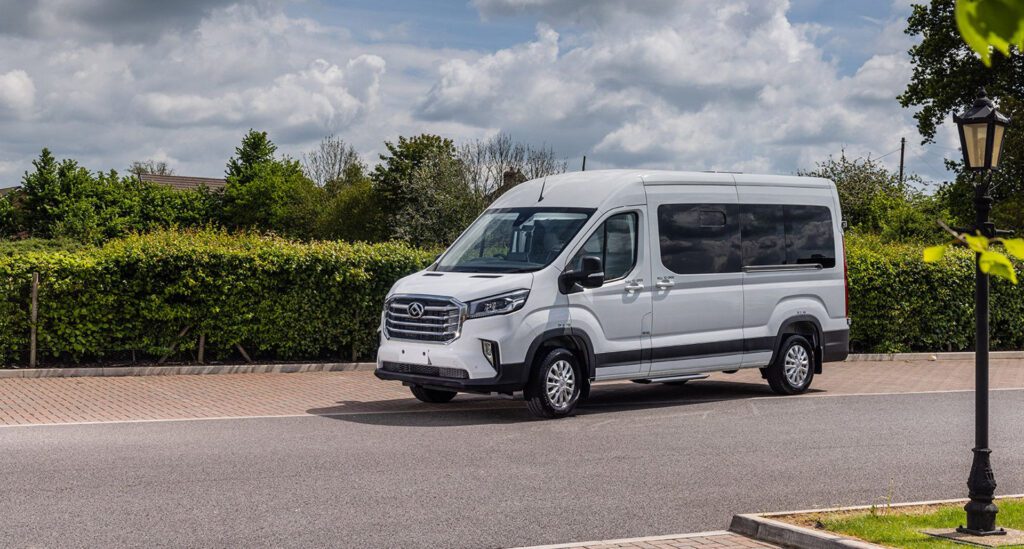
Posted 27th Oct 2025 by Samuel SEO Works
School Minibus Servicing: A Full Guide to Maintenance, Seasonal Upkeep & Class IV/V MOTs
13 minutes read time
School Minibus Servicing: A Full Guide to Maintenance, Seasonal Upkeep & Class IV/V MOTs
If you own or operate school minibuses in the UK, it is a legal requirement to ensure they are serviced and maintained to the necessary safety standards. Overlooking routine maintenance or seasonal upkeep can lead to breakdowns, costly parts replacements, and failed Class IV or Class V MOTs.
As UK specialists in school minibus sales, leasing, and aftercare, we’ve found that these problems are often caused by avoidable issues such as worn tyres, brake pad wear, and general neglect during periods of low use.
Fortunately, most of the issues schools face with their minibuses are entirely preventable. In this guide, we’ve outlined practical advice for daily driver and walkaround checks, common faults and MOT failures, maintenance responsibilities, and seasonal care tips – helping you keep your school minibuses safe, reliable, and compliant all year round.
Quick Guide:
- Why Regular Minibus Maintenance Matters
- Who’s responsible for School minibus maintenance?
- What are the laws for Servicing & MOTs for School Minibuses in the UK?
- School Minibus Walkaround checks
- School minibus seasonal maintenance tips
- When is a school minibus no longer roadworthy?
Who is responsible for school minibus maintenance?
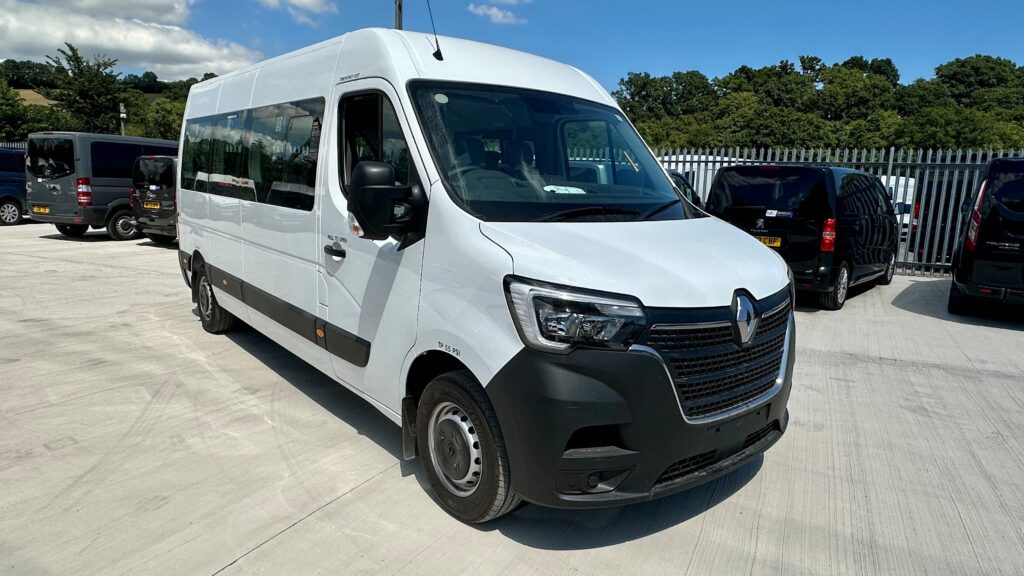
Confusion often arises where several staff or volunteers share driving or vehicle management duties, but under UK law, the responsibility for keeping a school minibus roadworthy is clear.
Organisation’s Responsibility
In the eyes of the law, the organisation that operates the vehicle is ultimately responsible for ensuring it is roadworthy and properly maintained.
This typically means the school, academy trust, or governing body, not the individual driver, is legally accountable for ensuring the vehicle:
- Is properly serviced according to the manufacturer’s recommendations
- Holds a valid MOT certificate (Class IV or Class V, depending on capacity)
- Is taxed, insured, and roadworthy at all times
- Undergoes routine safety inspections (typically every 6–10 weeks)
- Has all defects reported and repaired before the vehicle is used again
Driver’s Responsibilities:
Drivers are responsible for performing daily walkaround checks and for reporting any defects or warning signs immediately. If a fault is identified, the vehicle should not be driven until it has been inspected and deemed safe.
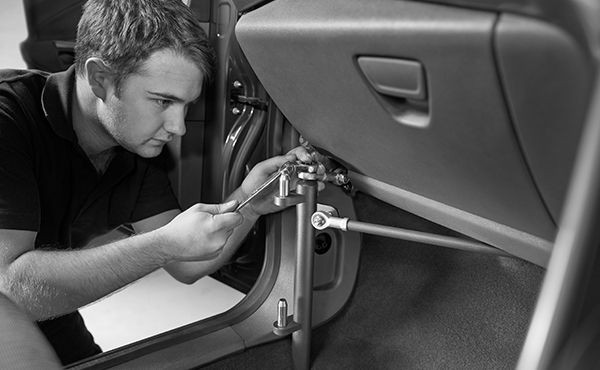
Why do school minibus checks matter?
Understanding what checks and what maintenance needs to be carried out, and who is ultimately responsible for it, is crucial for the safety of your organisation, staff and pupils. If a minibus is found to be unsafe, the operator (school or trust) could face penalties, invalidated insurance, or prosecution under road traffic and health and safety laws.
Beyond the legal risks, a poorly maintained vehicle can cause serious harm to passengers and damage your school’s reputation.
Every operator of school minibuses should have a named person or team responsible for vehicle maintenance, whether that’s a site manager, transport coordinator, or external service partner.
If I’m responsible for the maintenance, does that mean I have to carry it out?
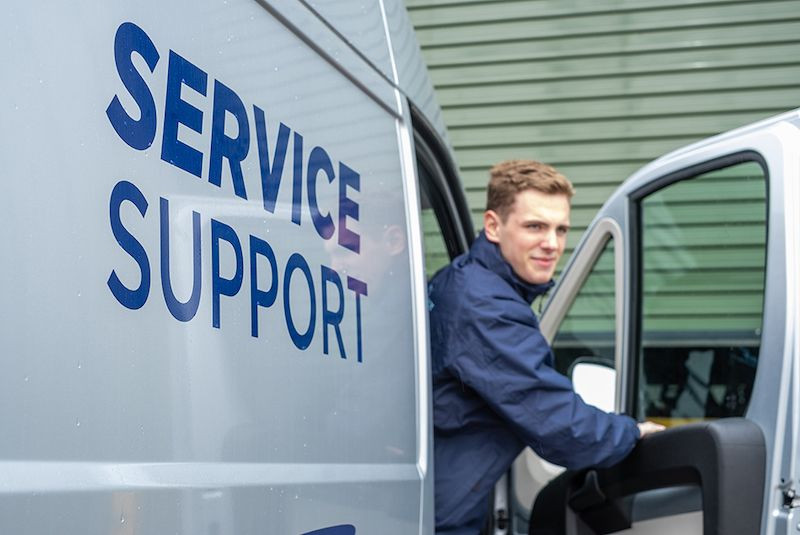
You are not expected to be a qualified mechanic or perform repairs yourself. Instead, being responsible simply means you must ensure that appropriate checks, servicing, and maintenance are carried out by competent professionals.
Many schools choose to work with a specialist minibus servicing or aftercare provider to ensure their vehicles are maintained correctly, meet compliance requirements, and remain roadworthy all year round.
What are the laws for Servicing & MOTs for School Minibuses in the UK?
There are a number of legal requirements and standards that your school minibuses must meet to be driven on the roads in the UK.
MOTs:
All school minibuses must undergo an MOT once they are one year old, and annually thereafter.
The type of MOT depends on the number of passenger seats within the vehicle. Minibuses with up to 12 passenger seats are generally tested to Class IV MOTs, while minibuses with a larger number of passenger seats (13-16) must be tested under Class V MOT standards at a designated testing centre.
This means that if you have a number of different-sized minibuses in your organisation’s fleet, you may have to arrange tests at different MOT centres for testing to be carried out.
Schools must hold valid MOT certificates and ensure no vehicle is used, parked on a public road, or otherwise in service without one.
Section 19 / Section 22 Permits:
School minibuses are typically operated under Section 19 or Section 22 permits. These are permits that designate the vehicle for not-for-profit use only.
Section 19 and Section 22 permits have their own specific legal obligations around safety and inspections that must be followed if a permit is obtained.
These inspections must be carried out by a qualified individual (garage or competent engineer) to a minimum standard. For minibuses under 12 years old, these inspections must be carried out every 10 weeks, while minibuses over 12 years old must be inspected every 6 weeks.
School Minibus Walkaround Checks
Every school minibus driver is legally required to carry out a walkaround check before every journey. These checks are an essential part of your school’s vehicle safety process and should be recorded daily.
The difference between servicing and walkaround checks:
A walkaround check is a visual and functional inspection carried out by the driver to ensure the minibus is safe to operate and free from defects. While servicing and safety inspections are carried out by qualified technicians, daily checks help to identify issues early, before they become serious or result in an MOT failure.
Exterior Checks:
Image of driver checking exterior of minibus
As part of a walkaround check, there are a number of inspections you need to make on the outside of the vehicle.
Tyres:
As part of the inspection, you will be looking at the tread depth, tyre pressure and general condition of the tyres. This is integral to ensure the vehicle handles safely on the road.
To check:
- Minimum tread depth: 1.6mm across the central three-quarters of the tyre tread
- Condition: Tyres must be free from bulges, cuts, cracks or exposed cords. Also inspect for stones or debris in the tread, as well as uneven tyre wear (could indicate alignment or suspension issues).
- Tyre pressure (PSI): Tyre pressure is usually 50–80 PSI (varies by model, always check the vehicle’s manual or door sticker). Ensure all four tyres, and the spare, are correctly inflated
Wheels:
When inspecting the wheels, you are ensuring that they are secure and free from any visible damage that could affect safety or stability.
- Wheel nuts: Make sure all wheel nuts are present, clean, and firmly secured. Look for any signs of looseness or rust marks around the nuts, which can indicate movement. If locking wheel nuts are fitted, ensure they are in place and tightened correctly.
- Wheel condition: Check for cracks, dents, corrosion, or other damage, particularly around the rim or hub area.
- Wheel trims or hubcaps: Make sure they are secure and do not cover or obstruct wheel nuts.
Lights & Indicators:
Lighting faults are one of the most common causes of Class IV and Class V MOT failures for school minibuses. Every external light must work correctly to keep your vehicle visible and safe in all driving conditions.
To check:
- Headlights: Both dipped and main beams should be working and properly aligned.
- Brake lights: Confirm all illuminate when the brake pedal is pressed.
- Indicators: Ensure left, right, and hazard indicators flash correctly.
- Fog and reversing lights: Check that both function properly.
- Reflectors and lenses: Ensure they are clean, intact, and free from cracks or fog.
- Number plate lights: Confirm they illuminate clearly when the headlights are on.
Mirrors and Windows:
Your mirrors and windows are essential for driver visibility and overall safety. Any obstruction or damage can compromise your ability to see other road users.
To check:
- Mirrors: Make sure all mirrors (side and rear-view) are clean, securely mounted, and properly positioned for the driver’s line of sight.
- Glass: Inspect the windscreen and side windows for cracks, chips, or excessive scratches. This is especially important for those in the driver’s line of vision.
- Windscreen washers and wipers: Confirm the wipers are free from tears or damage, move smoothly across the screen, and that washer jets spray effectively.
- Washer fluid: Top up as necessary using screen wash suitable for the season (add anti-freeze solution in winter).
Doors and Bodywork:
Doors, steps, and body panels should be secure and undamaged. Damaged or corroded bodywork can pose a safety risk or lead to failed MOTs.
To check:
- Doors: Open and close all passenger and driver doors, including the side loading door and emergency exit. Ensure they latch and lock correctly.
- Steps and handrails: Check that any folding steps or grab handles are secure and not slippery or damaged.
- Bodywork: Look over the vehicle for dents, sharp edges, rust, or loose fittings.
- Number plates: Ensure front and rear number plates are clean, readable, and properly fixed.
- Bumpers and trim: Confirm they are securely attached and not cracked or hanging loose.
Underbody (where visible):
You don’t need to get underneath the vehicle, but a quick visual inspection can help identify obvious issues.
To check:
- Leaks: Look for oil, coolant, or fuel leaks beneath the minibus.
- Exhaust: Check that the exhaust pipe is secure, free from excessive rust or holes, and not producing unusually loud noise or excessive smoke.
- Suspension: While not a hands-on test, note any obvious sagging, uneven stance, or knocking sounds when driving, these can indicate suspension issues.
Interior Checks
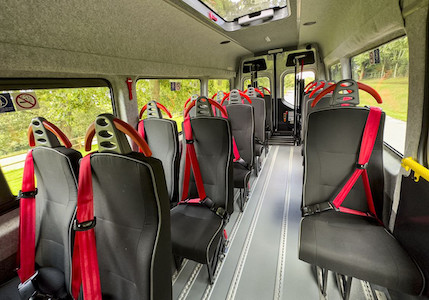
Interior checks are just as important as external ones. They ensure that the vehicle’s safety systems, controls, and passenger areas are all in good working order before setting off.
Seats and Seatbelts:
Seatbelts and seating are critical for passenger safety, particularly when transporting children or vulnerable passengers.
To check:
Seatbelts:
- Pull each belt fully out to check for fraying, cuts, or twisting.
- Confirm each buckle clicks in securely and releases properly.
- Ensure no belts are trapped or twisted behind seats.
Seats:
- Check that all seats are firmly fixed to the floor.
- Ensure no seat padding or fabric is damaged or obstructs belt operation.
- Verify that headrests (if fitted) are secure and positioned correctly.
Wheelchair fittings:
If your school minibus has been converted to fit wheelchair users, it is essential to check that straps, buckles, and anchor points are in good condition and fitted properly.
Doors and Emergency Exits:
All doors and exits must open freely and safely, and emergency exits must never be blocked.
To check:
- Emergency exits: Test that emergency doors, hammers, or windows open as intended.
- Door lights and buzzers: If your minibus is fitted with doorlights and buzzers on the interior, it is worthwhile to check that these operate as intended.
- Access routes: Make sure aisles and exits are clear from bags or obstructions.
- Interior handles: Ensure every door handle works from the inside and outside, where applicable.
Driver Dashboard & Controls:
Your dashboard will often give early warning signs of faults. Checking it before every journey can prevent small problems from becoming costly repairs.
To check:
- Ignition lights: When the ignition is turned on (before starting the engine), check that all warning lights illuminate, then go out once started.
- Check engine light: If the light remains on after start-up, report it immediately. This may indicate a fault that requires attention.
- Fuel and AdBlue levels: Make sure the vehicle has sufficient fuel and AdBlue for the journey.
- Temperature gauge: Ensure the engine warms up normally and does not overheat.
- Other indicators: Test wipers, horn, hazard lights, headlights, demisters, and ventilation systems.
Brakes and Steering:
To check:
- Footbrake: Press the brake pedal to ensure it feels firm (not spongy).
- Handbrake: Check it engages and releases smoothly and holds the vehicle securely on a slope.
- Steering: Turn the steering wheel gently left and right. It should move freely with no excessive play, stiffness, or unusual noises.
- Power steering fluid: If present, confirm the level is within the recommended range.
Heating, Ventilation and Defrosting Systems:
To check:
- Heating and air conditioning: Confirm both systems work correctly.
- Front and rear demisters: Test that demisters and fans clear the windscreen and windows effectively.
- Ventilation: Ensure vents are free from blockages and blowing air properly.
Safety and Emergency Equipment:
Schools have a legal duty to carry certain safety equipment when transporting pupils.
To check:
- First aid kit: Ensure it is complete, accessible, and within expiry date.
- Fire extinguisher: Confirm it is securely mounted, in date, and the pressure gauge shows green.
- Warning triangle: Check that it’s stored in an easily accessible location.
- High-visibility jackets: Have at least one available for the driver (ideally one per adult supervisor).
- Emergency hammer: Ensure it is securely fitted near exits and easily reachable.
Wheelchair Lift:
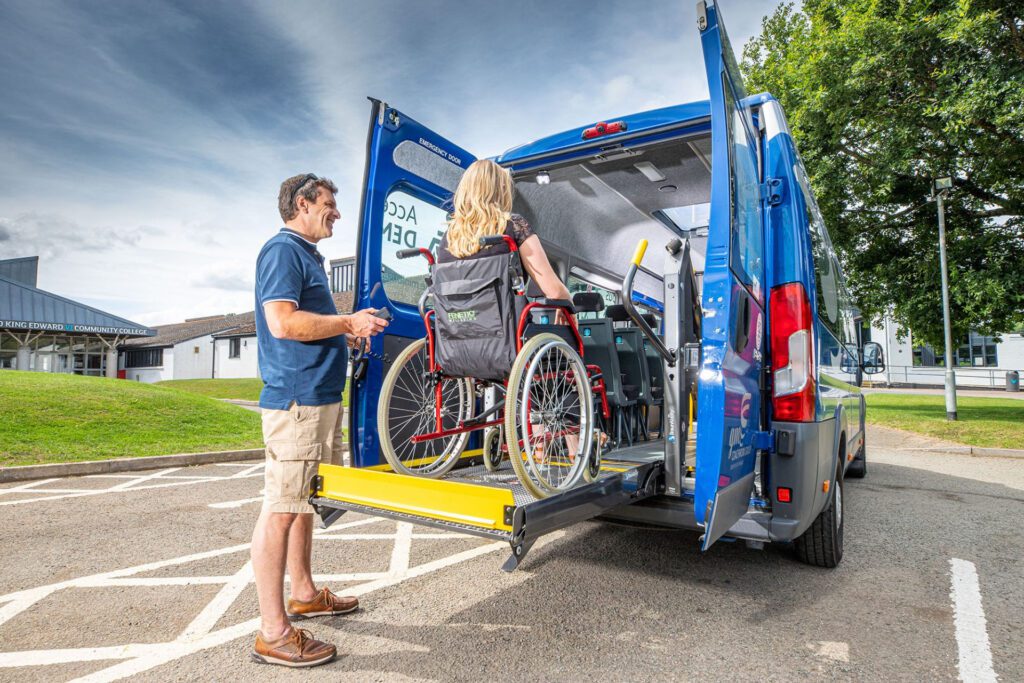
If your minibus has been converted or fitted with a wheelchair lift, it is important to ensure this operates safely as intended.
At GM School Minibuses, we offer wheelchair lift servicing and inspections to any location across the UK. Find out more about our lift services here.
We also offer wheelchair accessibility installations to your minibuses, with underfloor lifts, inboard lifts, and wheelchair ramp options available.
Top tip for your minibus: Keep a laminated copy of your school’s daily walkaround checklist in every vehicle. This ensures that your driver is aware of the necessary checks to carry out before every trip.
Seasonal Maintenance Tips for School Minibuses
Routine walkaround checks are vital, but many schools find that seasonal upkeep makes the biggest difference in keeping their minibuses reliable.
Weather changes, long idle periods, and term-time demands all put different pressures on the vehicle. Below, we’ve put together our top tips to help maintain the condition and performance of your school minibus fleet throughout the year.
Protect Against Rust and Corrosion:
Rust can shorten the lifespan of your vehicles, whilst also leading to more frequent parts replacement and downtime. For these reasons, it’s important to inspect for and protect against rust across your school minibus fleet.
Our advice:
- Wash thoroughly: Salt used on icy roads in winter and colder months can accelerate corrosion of metal parts. It’s important to rinse wheel arches, underbody, and steps regularly to remove road salts and protect your vehicle from corrosion.
- Check for rust: Pay close attention to door sills, loading steps, and seams. Small patches of corrosion can quickly spread if untreated. If you spot any areas of rust, speak to an expert about your vehicle’s condition. In some cases, rust converters and treatments can help to minimise its progression before damage can continue, but it’s important to check the roadworthiness of the vehicle
- Apply protection: Consider professional underseal or wax treatment before winter. This can help to prevent and protect against rust, particularly for bodywork and panels.
At GM School Minibuses, we recommend planning a deep clean after winter terms to extend vehicle life and avoid costly bodywork repairs.
Keep Heating and Air Conditioning in Good Shape
It’s easy to forget about your heating and air conditioning systems when temperatures are comfortable. In colder months, ensure heaters, blowers, and demisters work efficiently.
Equally, testing the air conditioning before summer can help to identify any problems beforehand. It’s recommended to run the air conditioning system regularly, even in winter, to ensure that the seals in the system remain lubricated and functional.
If you notice any issues with airflow in your minibus air conditioning, it’s worth checking your pollen/cabin filters first, as clogged filters can lead to poor airflow and air quality. Planning pre-season and pre-term checks can help you to plan servicing accordingly to minimise disruption to your trips.
Managing Battery Health
Flat batteries are one of the most common issues that any school vehicle fleet is prone to. Without a plan in place, vehicles left unused over long-term breaks (especially summer holidays) are at greater risk of flat batteries, which can lead to unnecessary replacements come the start of the new term.
GM School Minibus advice:
- Keep charged: Start and run the engine for 15–20 minutes once a week during holidays, or use a trickle charger.
- Test before winter: Cold weather reduces battery output, replace weak ones before they fail on a frosty morning.
- Holiday duties: Label maintenance duties clearly so responsibility is clearly understood and carried out.
Schedule Servicing Around Term Times
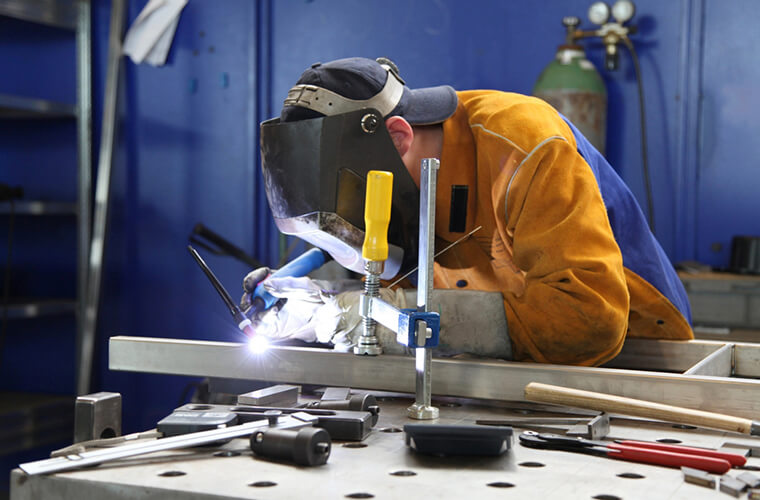
When running a fleet of school minibuses, it can be a challenge to arrange when to service and maintain your vehicles with periods of use and idle-time. The best advice is to plan your servicing, MOTs and repairs during half-terms and summer breaks when the minibuses are not needed.
If vehicles require servicing and maintenance during term time, it’s worthwhile staggering appointments if possible to ensure less disruption to trips and plans.
When is a school minibus no longer roadworthy?
Even with regular servicing and upkeep, every school minibus will eventually reach a point where it becomes uneconomical or unsafe to maintain.
A minibus is considered no longer roadworthy when it can’t meet the legal standards of safety and performance required for use on public roads. Equally, if the cost of keeping the vehicle compliant outweighs the value of the vehicle, it is worthwhile considering different options.
If your minibus regularly fails its Class IV or Class V MOT, or collects multiple advisories each year, this is a key sign that your vehicle’s condition is deteriorating and may be nearing the end of its life cycle.
Recurring issues with breakdowns and reliability, and difficulty with sourcing spare parts, may also suggest that it may no longer be safe or cost-effective to keep on the road.
If this sounds familiar, we can help. We offer a full range of petrol and electric minibuses ranging from 9 to 17 seaters, with sale and leasing options available. All new school minibuses come with both a 3-year manufacturer’s warranty and our own 3-year warranty to offer confidence and assurance in your minibus fleet.
We also offer a range of used school minibuses to suit smaller budgets, with all vehicles available with nationwide delivery direct to you.
For more information, get in touch with our friendly team today!
Read next: From licenses and weight limits to safety equipment and maintenance, check out our helpful guide to the legal requirements for school minibuses in the UK.

